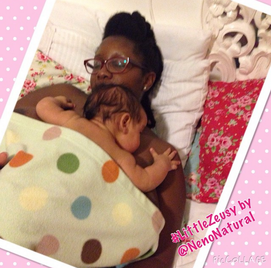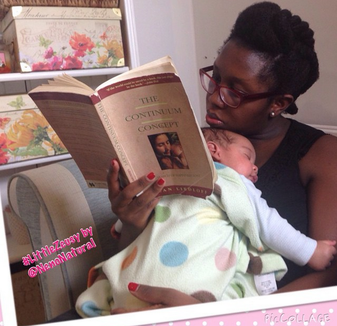 This blog post is dedicated to my NCT friend, Kat. Antenatal classes never explained why skin-to-skin contact between mother and baby was important. They said it needs to happen as soon as birth happens but didn’t go into the details of why - frankly, I’m sure most midwives couldn’t give you a proper explanation if you asked outside of the surface level: It helps with bonding, regulating body temperature, preventing postpartum depression etc. But why? Why does it have this impact? Importantly, whilst skin to skin immediately after birth is strongly recommended they never tell you to continue doing it when you get home. The Continuum Concept by Jean Liedloff has helped me to understand why it’s important and whilst I will try to explain it in my own words I know I won’t do the book justice. It’s a very academically rigorous book with many case studies. So in my own simple, layman words: Skin-to-skin Immediately After Birth Skin-to-skin post delivery is important for continuity of the human species. Basically, at the instant that a child is born mother nature wanted to ensure that its mother wholeheartedly wants to care for it. Consequently, at the point of birth and skin-to-skin contact a plethora of hormones are released that impress upon the mother the need to take care of this baby come hell or high water. In pre-historic times, the only reason a mother would not receive a baby post birth is because there was still birth. The result is that grieving hormones were released designed for the mother to mourn her child and eventually get over that loss. As sophisticated as we humans might think we are, evolutionary responses don’t develop so fast. If there is too much of a time delay between birth and mother-baby contact those grieving hormones kick into action and even if the baby is brought later it may be too late. The woman will be feeling all sorts of negative emotions and the mourning process cannot simply be stopped. Interestingly, not all animals have evolved the same way. With geese, the baby forms an attachment to the first thing it sees coming out and follows it everywhere. This happens because geese have many goslings and there is no way the mother goose could follow them all around. This is why you see a gaggle of goslings all following their mother. They were primed to do this at birth. If the gosling’s initial contact is with something else, e.g. a human, it will follow that human around everywhere too - interesting, right?  Skin-to-skin During Early Development (New Born Onwards) This is all about helping a baby transition from a comfortable, fully active environment (the womb) into a world composed mostly of “lifeless” air. Basically, in the womb, a baby is in a state of “bliss” - it is happy and content. The baby expects this happy existence where all its needs are met to continue. Whilst the initial skin-to-skin is crucial, follow-on skin-to-skin helps to build on the bond created and it has very calming effect on the baby because it reminds him of what he knows, the warmth and comfort of the womb in which he developed. The need for skin contact progresses towards a need for human contact in general. It’s a natural progression. When your baby is born it doesn’t think in words (as we do) but at first in terms of emotions (happy, sad, scared) and sensations (cold, hot, soft, hard). It’s taken out of the blissful, warm womb into a world of inactive “cold” air. Every single thing it hears and feels, every single treatment and experience feeds the baby with information about its new world; all the initial life experiences happen when your baby is in your familiar arms giving your baby confidence; it can smell mother and knows your voice well. So your baby’s not scared. In my case, I held Chester for just over 40 minutes as his body was rubbed clean and he took his first breaths and heard sounds outside of the womb. I lay in my husband, Harry’s, arms whilst Chester lay in mine still connected to me by the umbilical cord. When an infant is in arms intolerable experiences become much more tolerable to it and soon become expected. Because of this The Continuum Concept encourages taking baby about your daily life preferably in arms and not constantly treating them with "kitten mittens". Liedloff studies rural Amazonian communities to develop some of her theories and sees that an infant is carried around as its mother does all her daily tasks: walking through the forest (where many sounds are heard); the child encounters rain, wind, sunshine and all other weather changes. In its mother’s arms it experiences all that life has to offer and these life experiences are normalised thereby helping the baby transition into this life.  She compares this to a “Western” baby’s experience in a hospital where he may be taken into a baby ward/nursery (I don’t think this happens in England anymore) and instead of a mother tending to its needs immediately, the baby is left without motherly contact. He's also in lifeless clothing - his nappy perhaps changed according to a schedule, whether it was just soiled, clean or was soiled ages ago. Leaving baby in cots and prams where he’s stimulated only for short periods of time becomes the norm. Beyond the womb, a baby craves to have real life experiences, however, your baby will only meet life with a strong sense of self, with confidence, without fear if he is transitioned progressively from skin-to-skin to the in-arms phase to independence. Independence is a natural progression. You won’t spoil your child by holding them too much. They need that contact. Just as you should feed on demand you should also cuddle on demand. All too quickly the day will come when your little one crawls and needs your cuddles less and less. Ultimately, live your life as you always have and make your baby a part of it. There is no need to follow an overly rigid schedule. Going out? Take him. Going downstairs to make a coffee or bake a cake, take him. Let him watch, speak to him as you do it. Don’t leave him staring into space in his cot. This way your baby will transition naturally into independent living. Buy The Continuum Concept by Jean Liedloff on:
1 Comment
|
Archives
December 2015
Categories
All
By Heather Katsonga-WoodwardI'm always thinking, debating, considering and revising my views - some of those deliberations will be shared right here. |

 RSS Feed
RSS Feed
